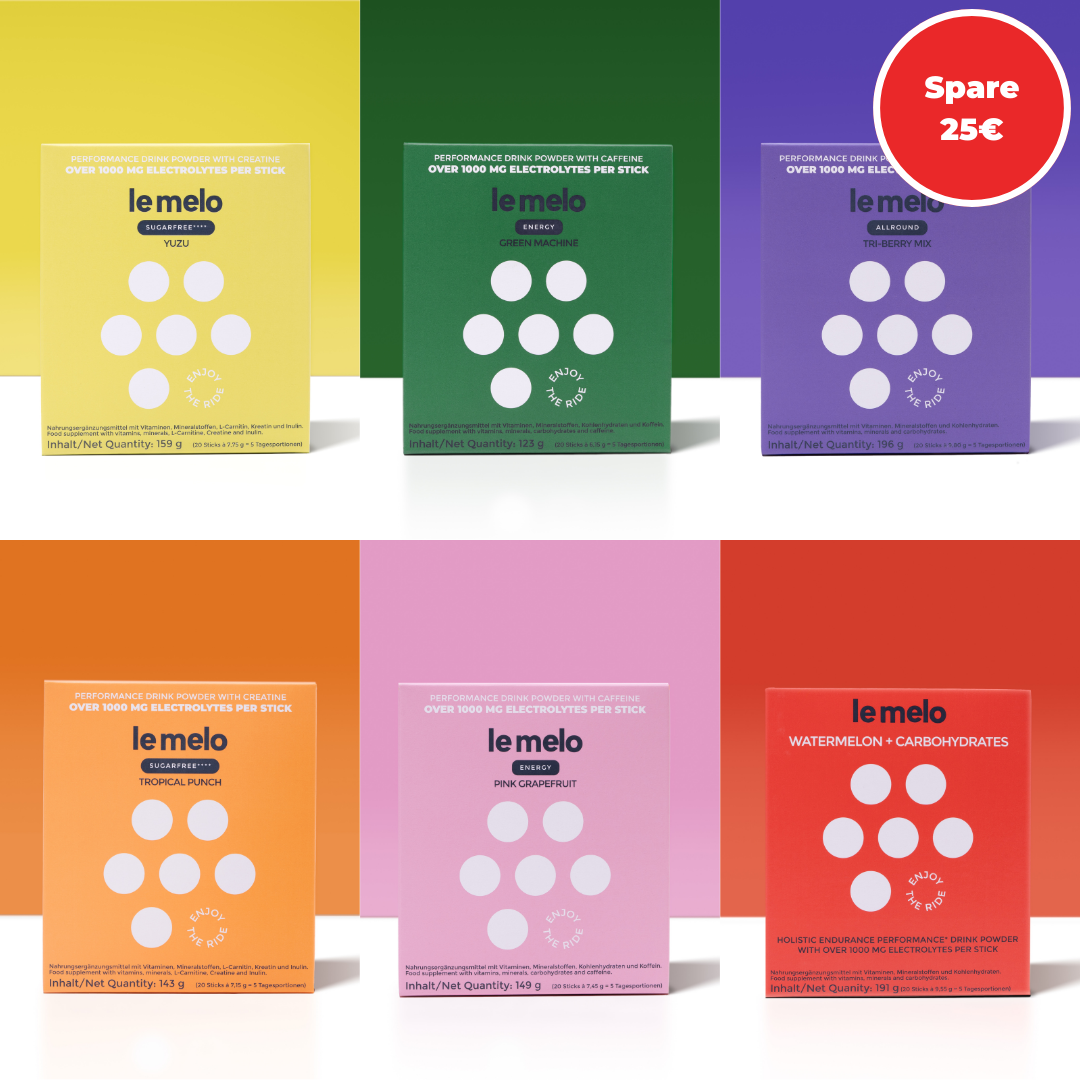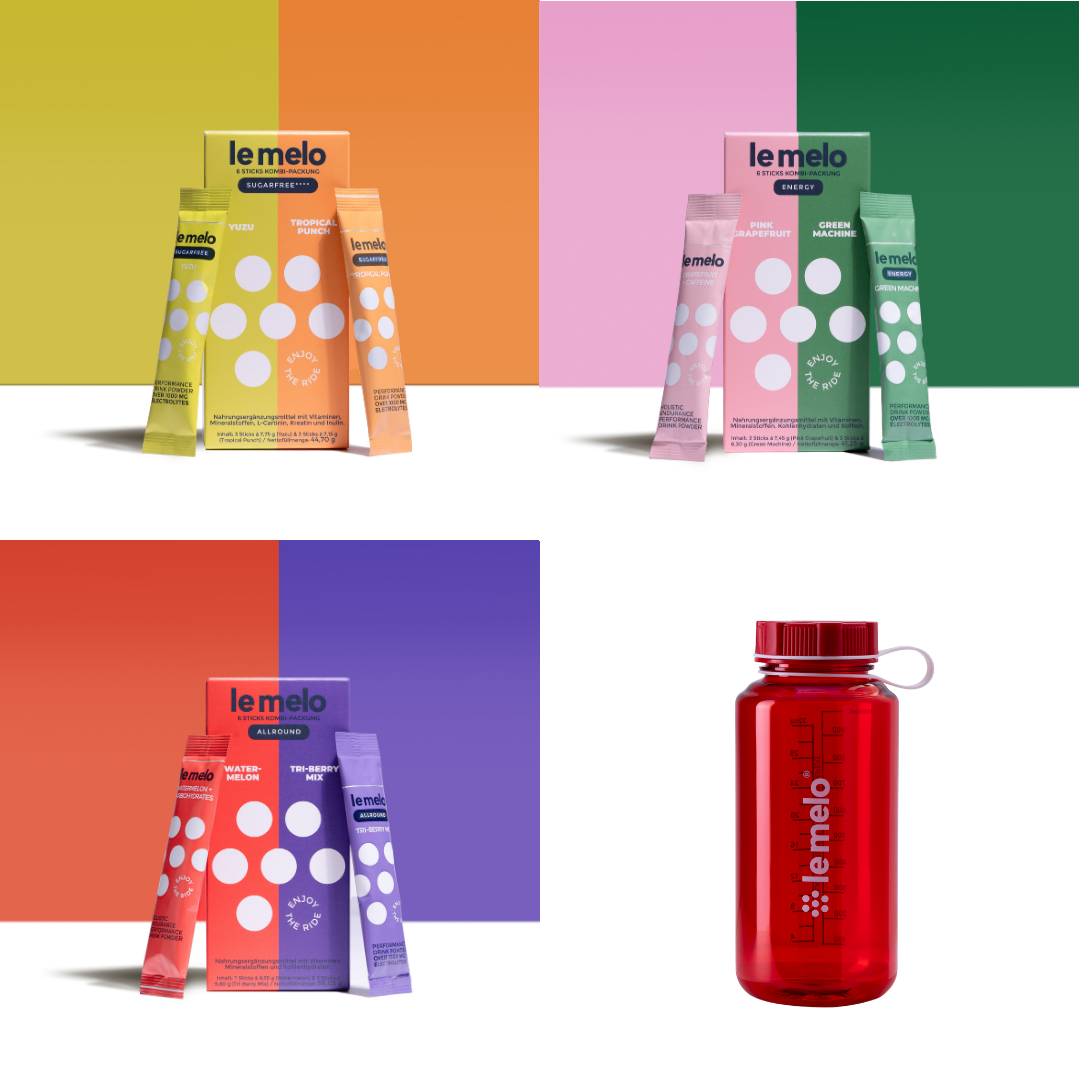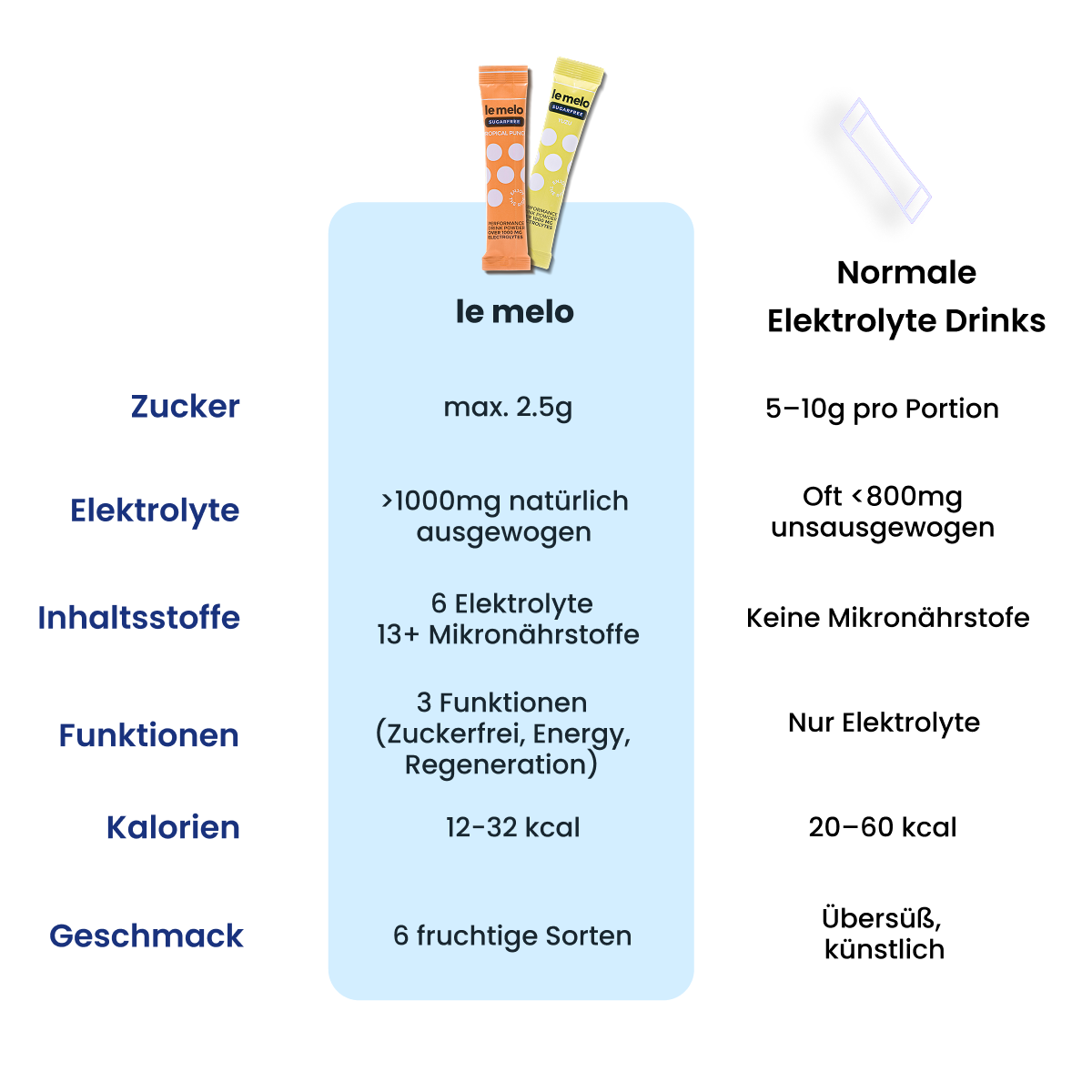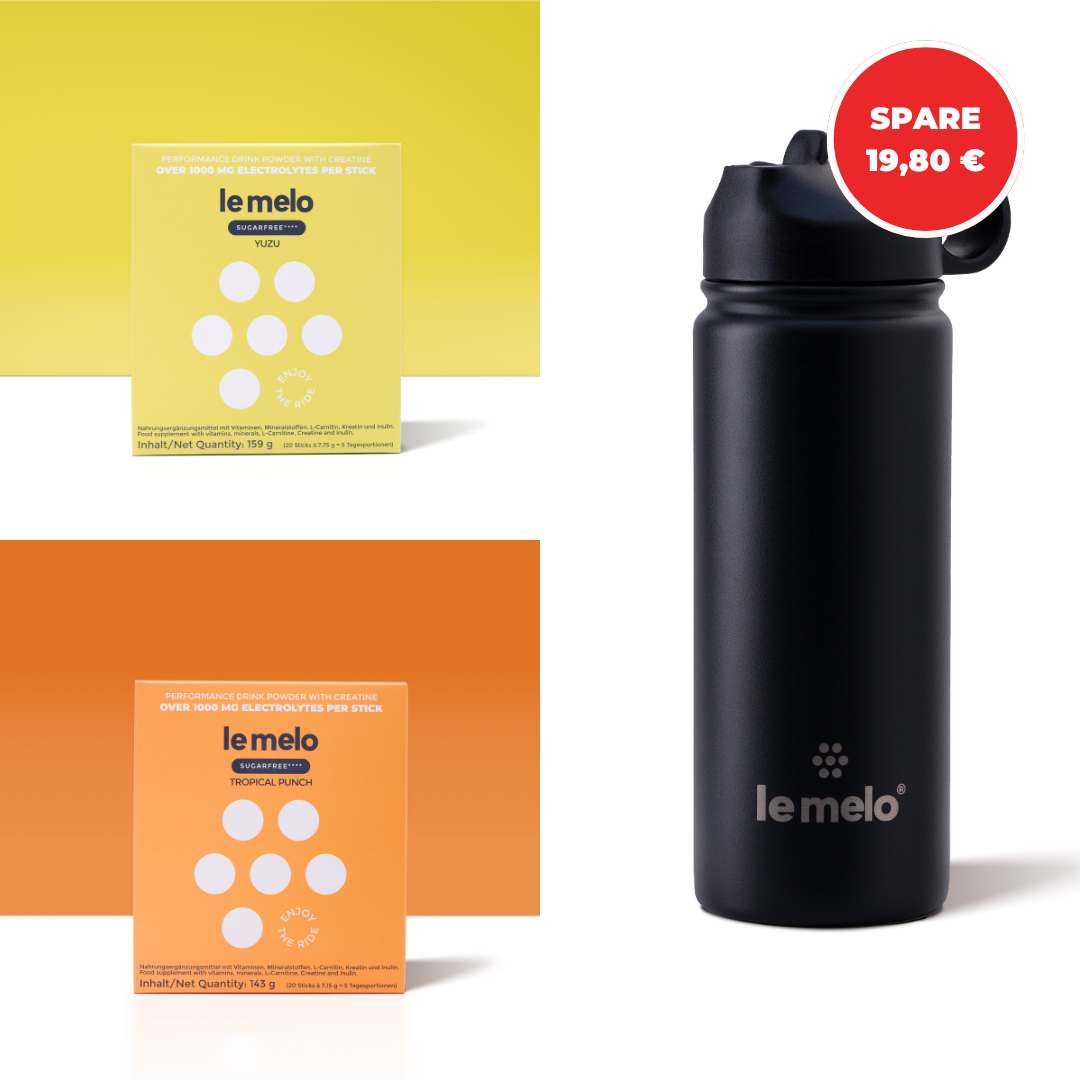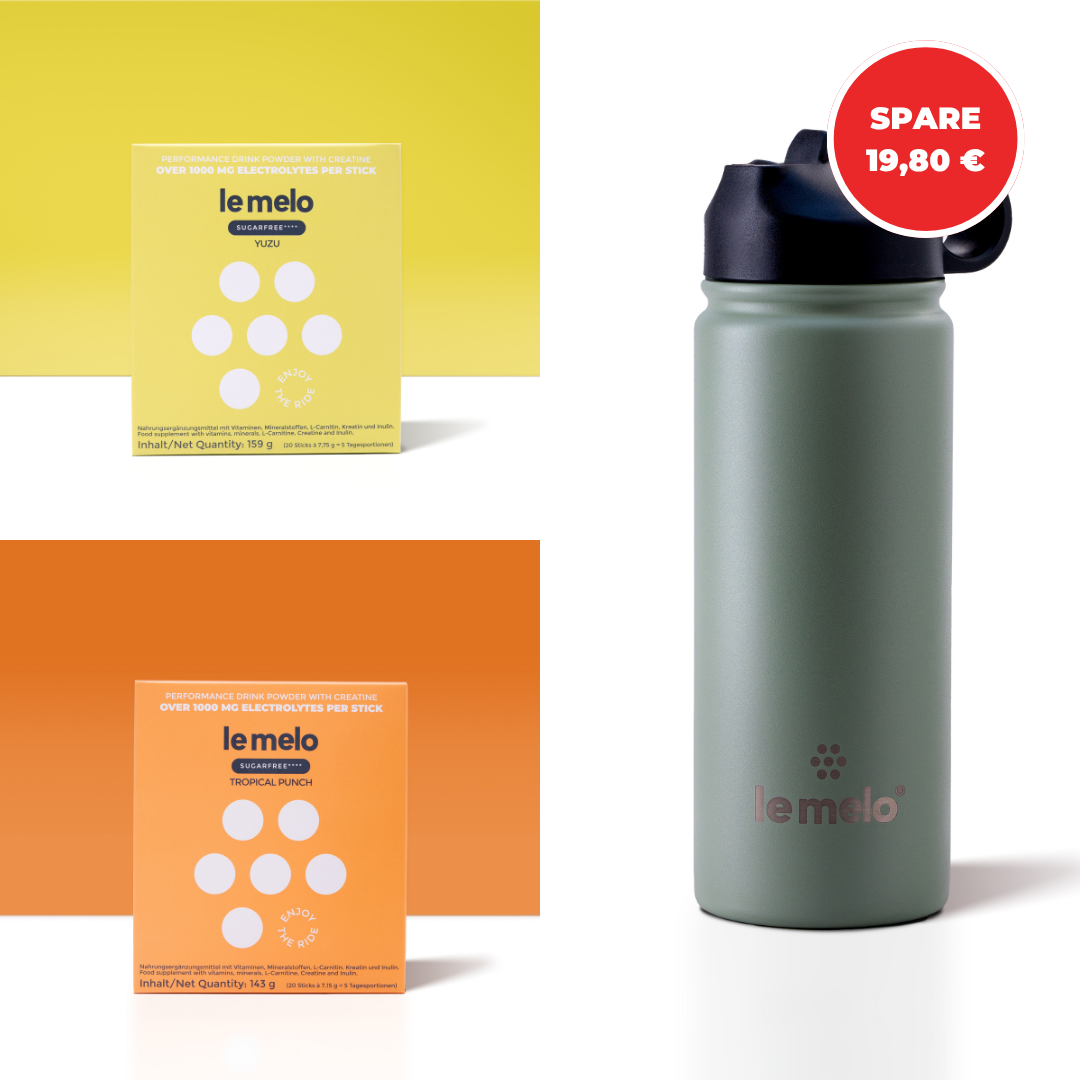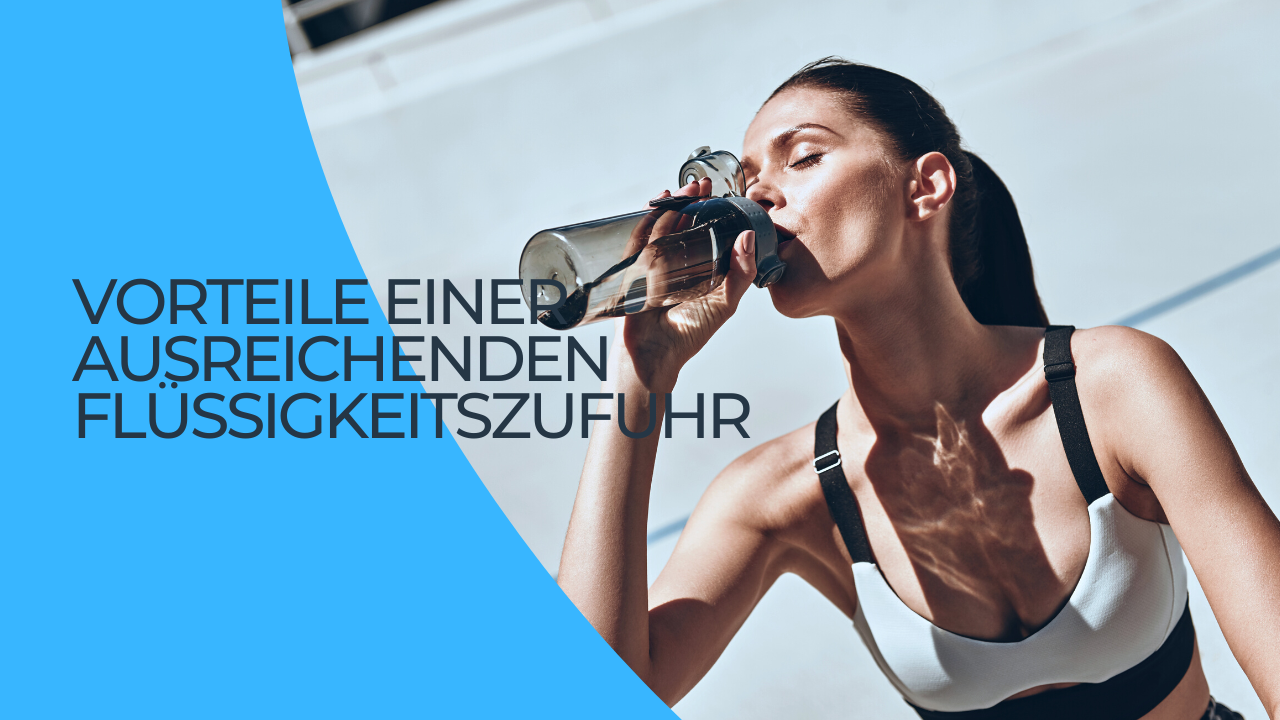It can take anywhere from 3 to 7 days to fully recover from 40 to 60 minutes of intense exercise (e.g. extreme mountain training).¹
In an extreme event like an Ironman, triathlon or marathon, the recovery time is 10 to 14 days.² It can take more than 19 days for your body to recover after an Ironman triathlon!³
And "recovering" doesn't just mean "not feeling sore".
Recovery means your red and white blood cells will return to normal, inflammation will subside, muscle fibers will heal, hormones and neurotransmitters will be restored, mineral levels will be replenished, etc.
Luckily, once you understand the bodily functions necessary for recovery, there are many scientifically proven ways to speed up and aid this process.
If you don't pull out all the stops to recover quickly, you lose the number of extra training days you can complete in the year, the quality of your training, the amount of performance you gain, and even your day-to-day well-being and therefore the enjoyment of your favorite sport.
Instead of staying below your potential or suffering from annoying aches and pains, support your body's recovery process with these proven techniques and discover what your body is really capable of.
12 scientifically proven ways to recover faster from exercise
These techniques range from the very basic to the more advanced, so you can choose your own "recovery adventure."
1. Fasting
Most exercise-related nutritional recommendations tell you to go into your workout well-fed and have a protein shake or meal immediately afterwards.
However, there is ample evidence that fasting can have a recovery effect.
A study of cyclists found that three weeks of overnight fasting increased post-exercise recovery while maintaining muscle mass, body fat percentage and performance.⁵
Another study of endurance athletes suggests that fasting exercise activates muscle protein conversion or repair faster, especially compared to athletes who ate carbs before exercise.⁶
Fasting also has advantages when it comes to strength training.
A 2009 study found that subjects who did fasted weight lifting had a greater anabolic response to a post-workout meal.⁷ This was demonstrated by increased levels of p70S6 kinase, a signaling mechanism for muscle protein synthesis , which serves as an indicator of muscle growth, doubled in the fasted group compared to the fed group.
When you are depriving your body of nutrients and go to training sober, the training puts a greater strain on your body, leading to greater adaptations.
2. Proteolytic enzymes
Enzymes are not only responsible for digesting your food.
They perform a variety of functions in the human body by speeding up certain chemical reactions, including those involved in post-workout recovery.
In the book "Enzymes & Enzyme Therapy," author Anthony Cichoke describes how taking enzymes can cut recovery from sprains and strains from eight weeks of inactivity to an impressive two weeks.
A study titled "Protease Supplementation improves muscle function after eccentric exercise" found that protease supplementation mitigates loss of muscle strength after eccentric exercise by regulating leukocyte activity and inflammation .⁸
Another study found that protease supplementation reduced strength loss immediately after eccentric training and promoted short-term strength recovery.⁹
When studying karate fighters, it was found that certain proteolytic enzyme blends reduced the recovery time for post-exercise hematoma, swelling, restricted mobility, post-exercise inflammation and general incapacity for each parameter by over 50%¹⁰
That's why our ultimate recovery formula, Kion Flex, contains a blend of proteolytic enzymes and other research-backed, natural ingredients proven to support exercise recovery.
Another study found that people with hydrolytic enzymes can recover from ankle injuries up to 50% faster.¹¹
3. Natural anti-inflammatory foods
At least two dozen factors are considered when assessing the anti-inflammatory effect of a food, including the amounts and proportions of various fatty acids, the levels of antioxidants and other nutrients, and a food's glycemic effect - that is, its effect on blood sugar levels.¹²
But it's not as clear cut as it might sound.
Some foods have both pro-inflammatory and anti-inflammatory factors.
An orange, for example, contains antioxidants that can fight inflammation, but it also contains natural sugars that can have a mildly inflammatory effect. Beef is another good example. A good steak is high in flammable saturated fats, but also high in anti-inflammatory monounsaturated fats.
Some handy anti-inflammatory foods include:
Pineapple: Pineapple is rich in a proteolytic enzyme called bromelain, which produces compounds that fight pain and inflammation.¹³
Blue, red, and purple fruits and vegetables: They all contain antioxidant flavonoids that reduce inflammation, prevent tissue breakdown, improve circulation, and promote a strong collagen matrix.
Sour cherry juice: The anthocyanins in tart cherries possess powerful antioxidant and anti-inflammatory properties that may reduce the severity of exercise-related muscle damage and associated pain and swelling.¹⁴ One study found that runners who consumed tart cherry juice seven days before and during a strenuous run had significantly less muscle pain after the run compared to the control group.¹⁵
Ginger: Possesses many powerful antioxidant and anti-inflammatory properties. A study showed that daily consumption of raw and heat-treated ginger resulted in a moderate to strong reduction in muscle pain after an exercise-induced muscle injury. This confirms the hypoalgesic effect of ginger in osteoarthritis patients and is further evidence of the effectiveness of ginger as a pain reliever.¹⁶
Turmeric: Curcumin is often touted as turmeric's "golden child," but new research shows that there are polysaccharides in turmeric called turmeric saccharides that have even greater healing potential than curcuminoids (more on this here).
While anti-inflammatory foods and antioxidants are an important part of a healthy diet, athletes should be aware that high doses of antioxidants can blunt the body's adaptive response to exercise.
One study examined the effects of relatively high-dose vitamin C and E supplementation on endurance training adaptations.¹⁷ The supplements had no significant effect on performance tests compared to the control group, but markers for new muscle mitochondrial production were only in the group increased who did not take supplements.
Another study looked at how these effects replicated when adapting to resistance training with the same supplementation regimen—1,000 mg of vitamin C and 235 mg of vitamin E daily.¹⁸ Supplementation had no effect on the amount of muscle growth, but did provide some measures of muscle growth Muscle strength was lower in the supplement group compared to the control group.
Against this background, it is advisable to take high-dose antioxidants a few hours before training.
4. Essential Amino Acids
Most athletes are familiar with branched-chain amino acids (BCAAs). There are a number of studies on taking BCAAs to provide energy and reduce exercise-related muscle damage.
However, there are some downsides to taking BCAAs compared to essential amino acids (EAAs).¹⁹
Because EAAs are a more complete source of amino acids and keep your body from using your own muscle tissue for energy during exercise, they are a better exercise recovery option than BCAAs alone.²⁰
One study showed that taking an EAA blend after resistance training increased muscle protein synthesis and net muscle protein balance, suggesting that taking EAAs post-workout can accelerate muscle repair, recovery, and growth.²¹
5. Deep tissue work
Deep tissue work includes anything that engages the fascia such as Rolfing, Muscle Activation Technique, Advanced Muscle Integrative Therapy, Graston Technique, Trigger Point Therapy, Deep Tissue Sports Massage, Foam Rolling, and even using a tennis ball, lacrosse ball, or golf ball to relieve tightness or penetrate sores.
Fascia is a tightly woven covering made primarily of collagen that permeates every muscle, bone, nerve, arteries, and veins in your body.²²
Trauma, inflammatory reactions (such as those that can occur after rigorous exercise), and surgical procedures can lead to what is known as myofascial limitations. These restrictions can exert tensile pressures of up to 1000 kg per square inch on the damaged tissue!
This type of pressure can block blood flow and lead to pain, inflammation, and reduced mobility. When such pressure builds up, it needs to be released through a procedure called myofascial release.
Myofascial relaxation involves applying gentle, sustained pressure to the limitations to restore full range of motion.²³ Self-administered trigger point relief has been shown to significantly reduce pain and improve quality of life.²⁴ It can be used with all of the tools and techniques mentioned above be reached.
If you want to do it yourself, all you have to do is find a tight spot, lie on the floor and work the sore area with the deep tissue tool, loosen the fascia, pull the skin away from the muscle a bit, put some pressure on the muscle and basically try to tear some of the fibers that are cramping and impeding recovery.
These recovery tools come in all shapes and sizes, but no matter what shape they come in, they're an important addition to your toolbox.
6. Reversal or inversion
If you've recently had a tough workout or been on your feet all day, an easy recovery method is inversion.
Inversion has been shown to help with lymphatic drainage, back pain, blood flow and circulation, and spinal or hip misalignments caused by strenuous exercise, and use of an inversion table lengthens the spine and mobilizes the hips.²⁵
You can get an inversion table or yoga swing, or you can just put your feet up against the wall and let the blood flow from your legs to the rest of your body for 2 to 5 minutes.
7. Compression clothing
Research shows mixed results when it comes to how compression affects athletic performance, but there is promising evidence on how compression garments can improve recovery from exercise.
In this study, it was found that wearing compression garments during the 24-hour recovery period improved various psychological, physiological, and some performance markers of recovery compared to uncompressed control conditions.²⁶
In particular, compression had a significant positive effect on perceived vitality, resting fatigue scores, muscle soreness, muscle swelling measured by ultrasound, bench press throw, and serum creatine kinase concentration.
Another study found that wearing lower-limb compression garments for 12 hours after exercise-induced muscle damage in young, active women improved all recovery markers except creatine kinase, with recovery measured by self-reported muscle soreness, creatine kinase levels, knee extensor strength, and the vertical jump height was measured.²⁷
With this information in mind, compression garments are definitely worth trying if hard workouts are keeping you out of action for longer than you'd like.
8. Acupuncture
One of the oldest healing practices in the world, acupuncture aids in recovery from muscle fatigue, overtraining and adrenal fatigue, muscle pain and many other ailments experienced by physically active or over-trained people.²⁸ ²⁹ ³⁰
The actual treatment involves inserting hair-thin needles into specific points along your meridian, the path through which your Qi flows. Needling these points, called acupuncture points, stimulates the body's natural healing mechanisms - because certain points are associated with certain diseases.
There are many theories about how acupuncture works, but how it really works remains a mystery.
The ancient Chinese explanation is that acupuncture corrects the flow of Qi, our life energy. The Western explanation is that acupuncture stimulates blood flow, the release of endorphins, and other physiological processes that temporarily relieve pain.
Regardless of how it works, millions of people have used acupuncture successfully, and research is discovering more and more of its benefits.
9. Electrical Muscle Stimulation (EMS)
Electrical muscle stimulation uses a device that sends electrical signals to muscles, causing them to contract. And depending on the type of electrical muscle stimulation (EMS) device you use, it can activate muscles in a therapeutic way.
EMS therapy can also go well beyond simple exercise recovery. Critical illness polyneuromyopathy (CIPNM) is a complication of critical illness that leads to muscle weakness.
One study found that daily EMS training prevented the development of CIPNM in critically ill patients, maintained muscle mass, and reduced ICU length of stay.³¹
The loss of muscle mass in critically ill patients has been attributed in part to sepsis and multiple organ failure as well as immobilization. Therefore, using EMS as an alternative to traditional exercise can aid in recovery from chronic obstructive pulmonary disease and chronic heart failure.
You can also enhance the effects of EMS by spraying the skin with magnesium or arnica gel or another anti-inflammatory beforehand and simply sticking the electrodes over the oil or lotion. Tour de France cyclists have been known to cover the electrodes with ice to increase the effect.
10. Vibration therapy
Whole body vibration therapy (WBV), where you stand or move on a vibration platform, has been shown to not only increase strength, power and speed, but also has hormonal, immunological and anti-inflammatory effects.
Postmenopausal women are aware of the risk of fractures, which is partly due to the lower bone density of the hip and general osteoporosis. A study of postmenopausal women found that a 24-week WBV exercise program not only improved isometric and dynamic muscle strength (+15% and +16%, respectively), but also increased hip bone density - a combination of benefits seen in women who participated in traditional resistance training was not observed.³³
While high-frequency vibration in the workplace (the type of vibration that pilots and truck drivers are exposed to) has negative effects on blood flow and muscle strength, low-frequency vibration as a training tool increases both muscle strength and muscle blood flow by increasing blood flow velocity and increasing blood pressure Decrease resistance.³⁴
There is a wide variety of vibrating devices, from wands to platforms to larger devices that cover a large area of the skin. The idea is the same as a massage therapist: the vibrations draw blood into the muscle and surrounding tissues. Blood flow to the tissues delivers oxygen, nutrients and growth hormones for regeneration while stimulating the lymph to drain waste and excess fluid.
You can use different forms of vibration therapy anywhere to help you recover quickly and get rid of sore muscles or tension.
11. Far infrared light
Far-infrared light is a type of radiant and thermal radiation, similar to the heat we get from sunlight. Radiant heat is a form of energy that heats objects directly through a process called conversion without having to heat the air.
Irradiating the body with infrared light has been shown to increase white blood cell counts and strengthen the immune system, warming tissues and increasing blood flow to injured or recovering muscles.
One study found that far-infrared heat improved neuromuscular performance recovery during five days of intense exercise, with improved recovery being associated with increases in testosterone-to-cortisol ratios.³⁵
Another study found that a 30-minute post-exercise far-infrared sauna bath is beneficial for neuromuscular system recovery after maximal endurance effort.³⁶
Most infrared saunas use ceramic or metallic elements to emit energy. Unlike a regular sauna or steam room, this energy penetrates the skin and warms it from both the inside and outside, allowing the heat to penetrate deeper.
12. Pulsed Electromagnetic Field Therapy (PEMF)
PEMF uses electrical energy to direct a series of magnetic pulses through injured tissue. The tiny electrical signal of each pulse stimulates cell repair by upregulating a tissue repair protein called "heat shock protein" and increasing the uptake of oxygen and nutrients into the tissues.
Countless studies have shown that PEMF is effective in healing soft tissue wounds, reducing inflammation, relieving pain and increasing range of motion.³⁷
By stimulating ATP production through a process called myosin phosphorylation, PEMF may also reduce the time it takes to replenish energy stores after a workout. PEMF can also speed up bone repair, which can help with stress fractures or broken bones.³⁹ PEMF also reduces symptoms of delayed muscle soreness.⁴⁰
PEMF devices can be held or moved gently over an area of damaged tissue or healing bone for ten to thirty minutes.
Interestingly, the magnetic signal emitted by a PEMF device is very similar to that of grounding mats. Unlike these mats, however, a PEMF device doesn't need to be plugged into an outlet with a three-pronged plug and grounded - so you're actually less exposed to electricity pollution.
Summary
Believe it or not, this is just a small sampling of the various ways you can speed up your body's recovery processes.
Experiment first with whatever tools or techniques are most accessible or applicable to you. After that you can go as deep as possible into the advanced techniques.
Whatever you do, make sure you prioritize recovery so you can perform at your best during your workout and reach your body's true potential.
Science:
http://journal.frontiersin.org/article/10.3389/fphys.2016.00260/full
https://www.researchgate.net/publication/233369486_Recovery_following_an_Ironman_triathlon_A_case_study
https://well.blogs.nytimes.com/2012/03/19/how-long-does-it-take-to-recover-from-a-marathon/
https://getkion.com/articles/body/signs-your-recovery-sucks/
https://www.ncbi.nlm.nih.gov/pubmed/19197210
https://www.ncbi.nlm.nih.gov/pubmed/21132439
https://www.ncbi.nlm.nih.gov/pubmed/20187284
https://www.ncbi.nlm.nih.gov/pubmed/19727022
https://www.ncbi.nlm.nih.gov/pubmed/17685720
http://www.foundhealth.com/proteolytic-enzymes/overview
http://therapy.epnet.com/nat/GetContent.asp?siteid=EBSCO&chunkiid=21671
https://www.bodybuilding.com/fun/how-anti-inflammatory-foods-helps-you-recover-faster.html
https://www.ncbi.nlm.nih.gov/pmc/articles/PMC3529416/
https://www.ncbi.nlm.nih.gov/pubmed/10075763
https://www.ncbi.nlm.nih.gov/pubmed/20459662
https://www.ncbi.nlm.nih.gov/pubmed/20418184
https://www.ncbi.nlm.nih.gov/pubmed/24492839
http://onlinelibrary.wiley.com/doi/10.1113/jphysiol.2014.279950/abstract
https://www.ncbi.nlm.nih.gov/pubmed/18974721
https://www.ncbi.nlm.nih.gov/pubmed/3316914
http://ajpendo.physiology.org/content/283/4/e648
https://www.myofascialrelease.com/about/fascia-definition.aspx
https://www.ncbi.nlm.nih.gov/pubmed/28167184
https://www.ncbi.nlm.nih.gov/pubmed/21334027
https://www.ncbi.nlm.nih.gov/pubmed/687049
https://www.ncbi.nlm.nih.gov/pubmed/20195085
https://www.ncbi.nlm.nih.gov/pubmed/20376479
https://www.ncbi.nlm.nih.gov/pubmed/19606508
http://www.acupuncture.com/newsletters/m_apr10/acupuncture%20adrenal%20glands.htm
https://www.health.harvard.edu/blog/acupuncture-is-worth-a-try-for-chronic-pain-201304016042
https://ccforum.biomedcentral.com/articles/10.1186/cc8987
https://www.ncbi.nlm.nih.gov/pubmed/18762281
http://onlinelibrary.wiley.com/doi/10.1359/JBMR.0301245/full
http://onlinelibrary.wiley.com/doi/10.1046/j.1365-2281.2001.00335.x/full
https://www.ncbi.nlm.nih.gov/pubmed/22163272
https://www.ncbi.nlm.nih.gov/pmc/articles/PMC4493260/
https://www.ncbi.nlm.nih.gov/pubmed/20329696
https://www.ncbi.nlm.nih.gov/pmc/articles/PMC2670735/
https://www.ncbi.nlm.nih.gov/pubmed/9492162
https://www.ncbi.nlm.nih.gov/pubmed/24906295


